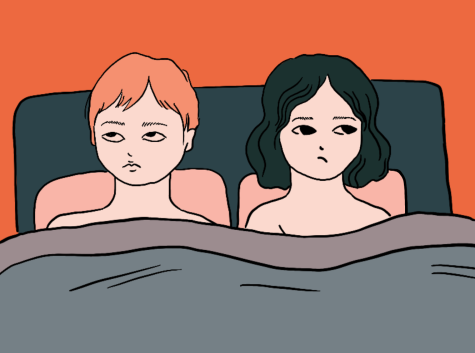Inclusive sexual education matters
April 9, 2021
Do you remember your middle or high school sexual education class? I do. In 8th grade, my sex ed teacher discussed heterosexual relationships and contraceptive methods to prevent pregnancy. Very little time was devoted to discussing topics regarding LGBTQ+ experiences and safe-sex practices.
According to GLSEN’s 2019 National School Climate Survey, only 8.2 percent of LGBTQ+ students reported receiving inclusive sex education. This needs to change. Inclusive sexual education must be taught in schools in order to promote sexual health and to foster safe and accepting school environments for LGBTQ+ youth.
One of the reasons why sexual education lacks diversity is because of the absence of federal policies to mandate comprehensive sexual education in schools. Instead, sexual education practices are determined by individual states, and the lack of uniform basic standards has resulted in policies that are uncomprehensive and sometimes homophobic.
Currently, only 29 states and the District of Columbia have laws that mandate sex ed, and those laws do not necessarily require that the curriculum are inclusive or of high quality. Of the 29 states that mandate sex ed, only nine currently require affirming discussion of LGBTQ+ identities and relationships, while seven states actually prohibit sex educators from discussing LGBTQ+ identities and relationships in a positive manner.
When students receive sexual education that fails to address their needs and relationships, they are at a higher risk for engaging in unsafe sexual behaviors, which can have negative impacts on their health. Additionally, when sex ed either ignores or condemns LGBTQ+ relationships, such youth can face isolation and rejection at school. LGBTQ+ students should be provided with appropriate, scientifically based health information, and they also have the right to feel safe and accepted in their school environments.
So what does inclusive sexual education look like in practice? I believe that inclusive sex ed exists in schools only when LGBTQ+ people and issues are actively included and infused into the curriculum, instead of relegated as side issues or ignored altogether. Heterosexual orientation should not be assumed when teachers are discussing relationships and sexual behavior. The gender binary should be actively challenged and attention must be given to transgender people and their experiences. Additionally, sex education should foster a safe space, where students feel comfortable articulating their experiences and asking important questions.
Ignoring the diversity of experiences does a disservice to students. An article from GLSEN explains the problematic nature of the “ignoring” approach. Sex educators who employ this approach may exclusively discuss abstinence or birth control as the only effective contraceptive methods. This approach is highly problematic because it constructs heterosexuality as the “norm.” LGBTQ+ youth are further marginalized, and their health is impacted.
Now is the time to create inclusive sexual education in schools, especially since LGBTQ+ youth are currently being targeted in state legislatures with transphobic and homophobic policies. I urge you to reach out to your state legislators and school district to ask about and advocate for inclusive sexual education. LGBTQ+ and transgender students’ well-being depends on it.







Will • May 15, 2021 at 12:02 pm
Wikipedia.
Monroe • Apr 13, 2021 at 5:26 pm
Does anyone know where to get inclusive sex ed, preferably online?